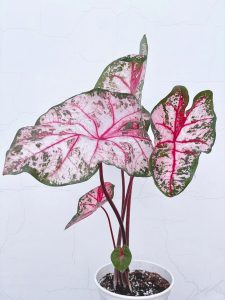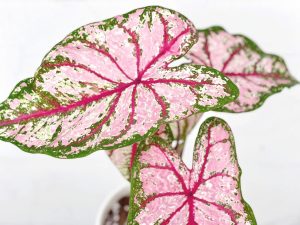- English
- Chinese
- French
- German
- Portuguese
- Spanish
- Russian
- Japanese
- Korean
- Arabic
- Irish
- Greek
- Turkish
- Italian
- Danish
- Romanian
- Indonesian
- Czech
- Afrikaans
- Swedish
- Polish
- Basque
- Catalan
- Esperanto
- Hindi
- Lao
- Albanian
- Amharic
- Armenian
- Azerbaijani
- Belarusian
- Bengali
- Bosnian
- Bulgarian
- Cebuano
- Chichewa
- Corsican
- Croatian
- Dutch
- Estonian
- Filipino
- Finnish
- Frisian
- Galician
- Georgian
- Gujarati
- Haitian
- Hausa
- Hawaiian
- Hebrew
- Hmong
- Hungarian
- Icelandic
- Igbo
- Javanese
- Kannada
- Kazakh
- Khmer
- Kurdish
- Kyrgyz
- Latin
- Latvian
- Lithuanian
- Luxembou..
- Macedonian
- Malagasy
- Malay
- Malayalam
- Maltese
- Marathi
- Mongolian
- Burmese
- Nepali
- Norwegian
- Pashto
- Persian
- Punjabi
- Serbian
- Sesotho
- Sinhala
- Slovak
- Slovenian
- Somali
- Samoan
- Scots Gaelic
- Shona
- Sindhi
- Sundanese
- Swahili
- Tajik
- Tamil
- Telugu
- Thai
- Ukrainian
- Urdu
- Uzbek
- Vietnamese
- Welsh
- Xhosa
- Yiddish
- Yoruba
- Zulu
- Kinyarwanda
- Tatar
- Oriya
- Turkmen
- Uyghur

He maara penei i te Princess māwhero a Aglaonema māwhero hei tipu o roto i te tipu o roto na tona ahua ataahua me te tae rau rereke. I tua atu i te taapiri i nga tae marama ki nga taiao o roto, he nui te horoi hau.

Aglaonema Pink Piny
Nga waahanga Botanical
Aglaonema Pink Piny He tipu tipu tonu o te whanau Aatanga me te mema o te puninga aglaonema. Maori ki te tonga o Ahia, ina koa i nga whenua o te iwi e rite ana ki a Philippines, ko Indonesia, a Malaysia, na te mea he tipu nga tipu o roto.
Te whakaritenga tipu
Usually, Aglaonema Pink Princess has upright leaves and creeping stalks. Its well developed root system enables efficient absorption of nutrients and water from the ground. Usually short and mostly produces roots below, the stem of the plant extends to the surrounding via rhizomes. Usually concentrated at the apex of the plant, the leaves’ growing position forms a thick leaf cluster.
Tuhinga o mua
Among Aglaonema Pink Princess’s most distinguishing characteristics are its leaves. The leaves have a glossy, shiny surface and oval, oblong form with smooth margins. The colour of the leaves is very remarkable:
Tauanga Tae
Ko te rangatira o te Pikitiki mawhero te nuinga o nga rau whero, ko te tipu tipu me nga ahuatanga maama e pa ana ki te nui o tenei tae. Ahakoa i roto i nga tikanga iti o te tae māwhero o te rau ka ngawari, ka ngawari ake te maarama. Ko te tae o te tae ka tohatohahia i runga i nga rau ka hurihia; I te nuinga o te waa, ka whai kiko te mawhero me te matomato i te kakano tuuturu e hanga ana i tetahi paanga tuatahi.
Kakano rau
Usually thick, the leaves’ texture helps to efficiently withstand changes in the outside surroundings. The plant presents a lovely light and shadow effect under the light because of the smooth surface of the leaves and their particular glossiness. Additionally not easy to shred or wrinkle, the texture of the leaves increases their durability when handled and cared for.
Te whanonga whanaketanga
Ko te tipu o roto o te tipu o roto o te kuia o te māwhero o Dieffenbachia ka tupu i raro i te whānuitanga o nga taiao tipu. Ko ona hiahia o te roha kei roto:
Hiahia te marama
Ahakoa ka taea hoki e ia te tupu i te maama iti, ko te kuia o te māwhero o Dieffenbachia e rite ana ki te maama. Ahakoa ka taea te ora i te maama iti, ko te maama te maama ko te puna whaanui pai ki te pupuri i te tae me te hauora o nga rau. Ka taea e nga rau te tahu i te ra tika, na reira ka ngana ki te pupuri i te ra tika.
Te pāmahana me te haumākū
Ahakoa ko tenei tipu me iti te makuku me te pāmahana, 20 ki te 28 nga nekehanga Celsius ko te waahanga e tika ana mo te whanaketanga. Ko te pāmahana iti rawa ka taea te tipu te tipu hei whakawhanake i te mangere ranei. Mo te haumākū, otira ki te waahi maroke o roto, ko te kuia o te māwhero o Dieffenbachia e rite ana ki te tino mahana. Ko te whakainu i nga wa katoa ka awhina i te haumākū i roto i te whānuitanga tika.
Tuhinga o mua
Ko tetahi o nga take ko te Pikitiki Pikiki māwhero ko Dieffenbachia te mea rongonui ko tana tipu mangere. Ko te tirohanga roa mo te wa roa e whai kiko ana mo te tipu ko te tipu tipu ka taea e ia te pupuri i tana ahua atawhai me te tae o te rau pai mo te waa roa.
Te tipu o te tipu
Ko te kuini kikorangi o DieffenBachia me whai tikanga e tika ana kia tae ki nga tikanga mo te oneone, nga ipu, me te whakatipu i te mea kia ora ai koe:
Tono mo te oneone
The pink princess dieffenbachia likes well-drained soil, hence you should use permeable soil high in organic content. To increase the soil’s drainage and air permeability, combine leaf mould, perlite and peat moss or use a general-purpose potting soil especially designed for indoor plants. Steer clear of thick soil as it will encourage root rot and water buildup.
Tuhinga o mua
The Aglaonema Pink Princess cannot grow without the appropriate container. Drainage holes at the bottom of the container will help to avoid root troubles and water collection. The container’s dimensions need to fit the plant’s root system. While a too small container will restrict the area of development for the plant, a very big container might cause the soil to be too damp. Regularly check the root system of the plant to determine if it requires a repot; then, repot it in time when the root system gets too thickly.
Te whakahaere i te whakatipuranga
He iti noa te hiahia mo te whakatipu mo te kuia o te māwhero o Dieffenbachia. Kotahi te marama o te tongi wai toenga ka awhina i te tipu o te tipu puta noa i te tipu o te puna me te raumati. Ko te tipu ka tipu i te ngahuru me te takurua, na reira ko te maha o nga hua e whakahekehia ana i tenei waa. He pai te whakaaro ki te whai i nga huarahi tongi i te nui o te whakatipu ka taea e te kowhai o nga rau, pakiaka pakiaka ranei.
Kaiwhakahaere me te tiaki
Ko te tiaki i te kuia o te piniwhero Evergreen e karanga ana mo te whakainu, kuti, pepeke me te mana mate:
Whakamahana
Ko te whakaū i te kuia o te māwhero i runga i te wai, no reira he mea nui. Me pupuri te tipu i te oneone maku, engari me aukati i te hanga wai-roa. Whakataahia te wa i te wa ka maroke te mata o te oneone i te puna me te raumati; Tapahia te tere o te whakainu i te ngahuru me te takurua hei aukati i te makuku oneone tiketike. Ka taea e te ngoikore o te oneone ka awhina koe ki te whakatau mehemea e hiahiatia ana te whakamakuku. Ko te hauora o te tipu ka whakawhirinaki ki te oneone e mau tonu ana i te kiko makuku.
Tapahi
Ko te nuinga o te kuia o te Pikitia Evergreen e tino kaha ana ki te whakarereke me te tango i nga rau kowhai. Tirohia nga rau o te tipu; Tapahia nga rau kowhai, ka maroke ranei i te waa ki te pupuri i o raatau ataahua me te hauora o te tipu. Ko te tapahi tika ano hoki mo nga manga he roa rawa te roa ki te awhina i te tipu ki te tino tika.
Te mate me te mana patu
Ko nga aphids, nga pungawerewere whero me nga mate o te rau he mate noa me nga mate o te kuia o te māwhero o Newaygreen. Tirohia nga rau me nga kakau o te tipu; mahi ki nga pepeke me nga mate i te waa ka kitea. I a ia e tiaki ana i te taiao whakahoahoa tika ki te whakaheke i te whakawhanaketanga o nga riha me nga mate, ka taea pea te rongoa me nga pesticides tika ranei. Ko te horoi i te mata maha maha ka awhina i te aukati i te tipu mai i te tipu.
Te whakamahinga whai hua me te uara whakapaipai
Ko te kuini o Aglaonema ka kitea he nui te whakamahinga i roto i te hoahoa o roto na te mea he rereke te ahua me te ahua. I whakanohohia ki roto i nga ruma noho, nga waahi mahi, nga ruma ako, me etahi atu waahi, ka whakanui i te taiao maori me te taiao maamaa o te waahi o roto. Ko tana whakatikatika kia pai ai te maarama ki te pupuri i te ahua tipu pai i roto i te taiao kaore i te maama, na reira ka tukuna he whakapaipai matomato ataahua mo te rohe.
Hoahoa o roto
Ka whakamahia pea te Princess māwhero hei tipu tuuturu i roto i te waahi whakahiato penei i te matapihi, papamahi, pukapuka pukapuka ranei i roto i te kaimoana o roto. Ko ona rau mawhero ka uru ki te hoahoa kaainga o naianei ki te whakarato i te taiao ngawari. Ko te kowhiri i te puawai puawai tika me te ipu ka pai ake te ataahua me te whakakii i te huarahi hoahoa o roto.
Tari kōpuku
Ko te kuini o te māwhero ka whai hua ki te taiao mahi, e te whakaora i te riihi mahi me te whakapiki i nga mahi mahi. Mo te waahi mahi hou, ko ona hiahia atawhai iti me te ngawari kia pai te pai. Ki te hoatu i te waahi mahi me te kaha, ka waiho pea i te taha o te teepu, i te rohe huihuinga, i te waahi huihuinga ranei.

Aglaonema
Te Ko te Kninions Pink Viffenbachia has become a standout plant in indoor gardening with its unusual leaf colour and graceful look. Ensuring the good development and attractive presentation of the plant depends on an awareness of its fundamental qualities, growing circumstances, and care needs. Reasonable light, temperature, humidity control, suitable soil and container choice help to maximise the decorative value of the Aglaonema Pink Princess. Regular maintenance and management will also aid to preserve its long-term health at the same time. Whether used as workplace greening or interior décor, the Pink Princess Dieffenbachia may accentuate the space’s elegant elegance and soothing ambiance.
Previous News
Nga whakaritenga o te pāmahana mo te whetu o Alocasia pouriNext News
The amount of watering Anthurium Clarinervium n...


